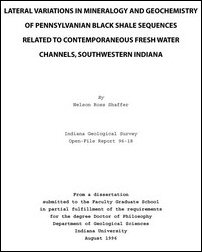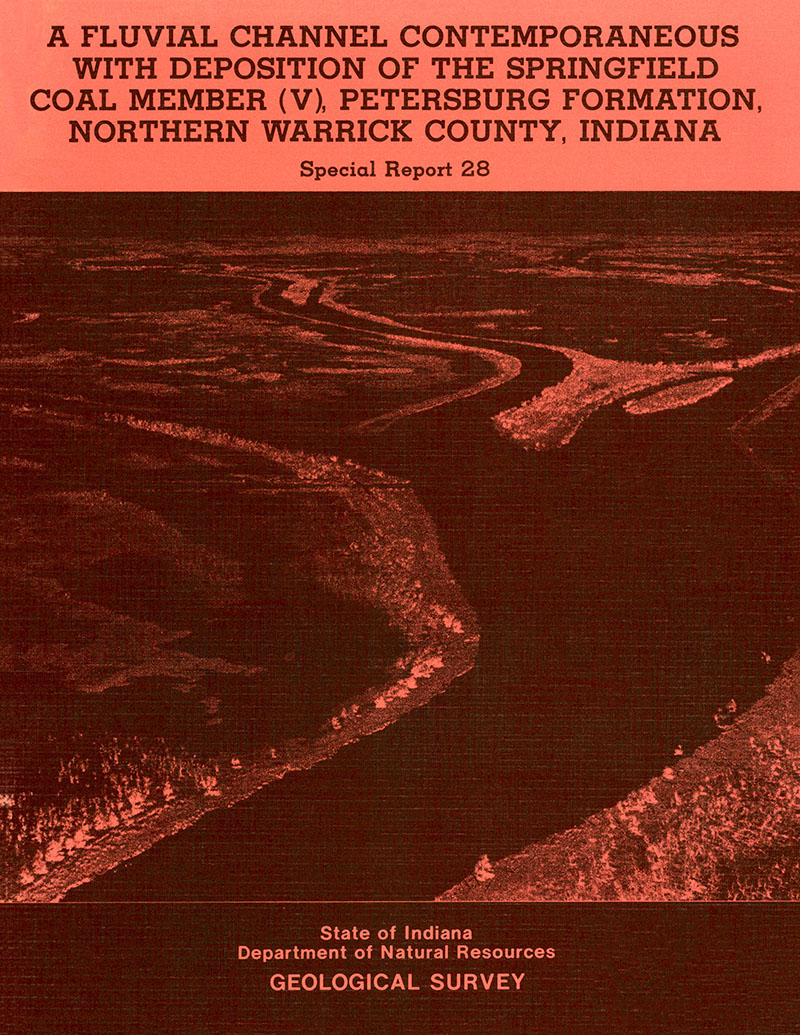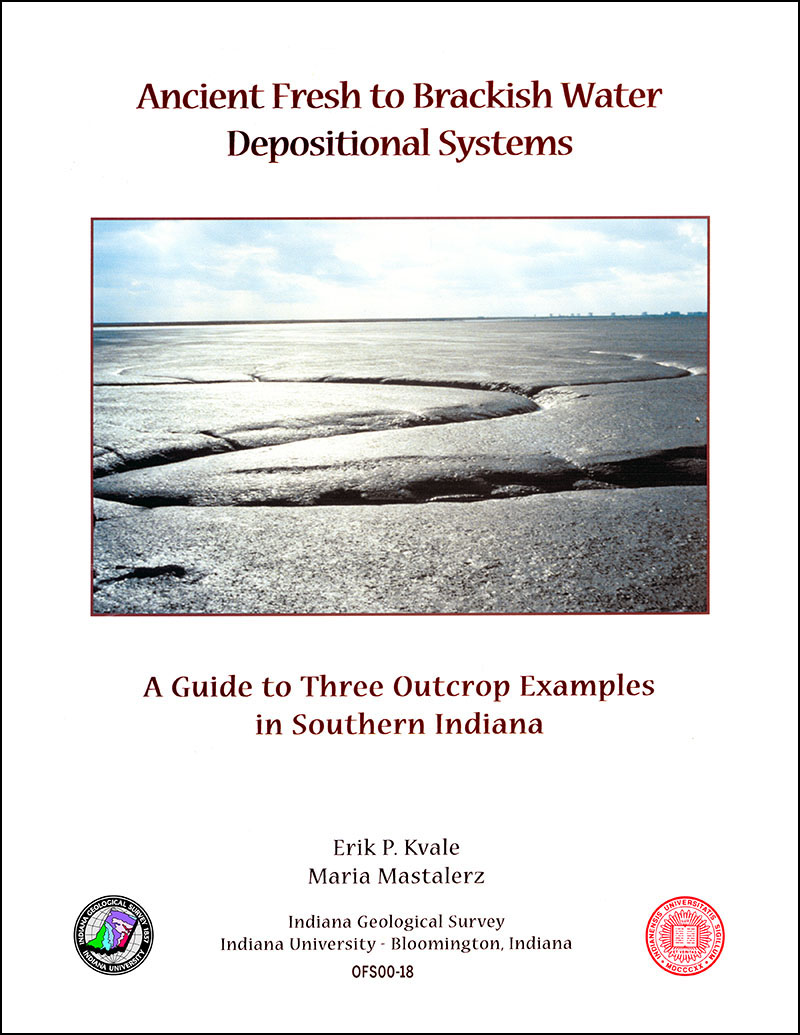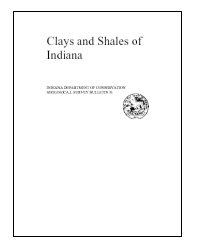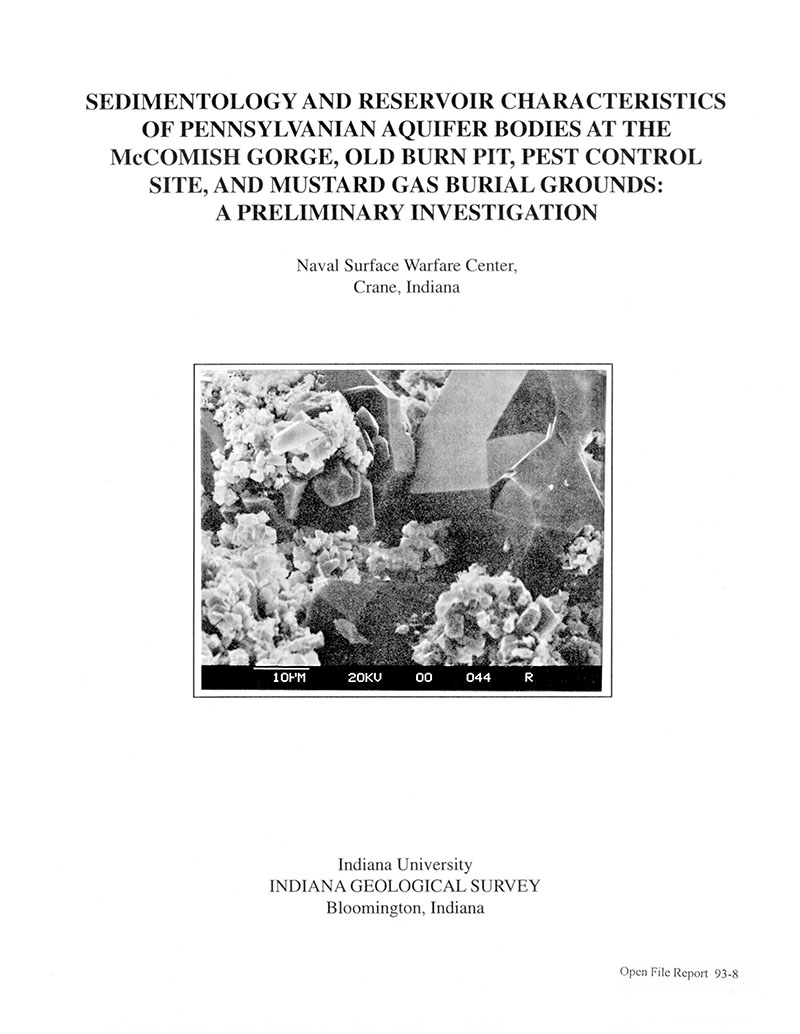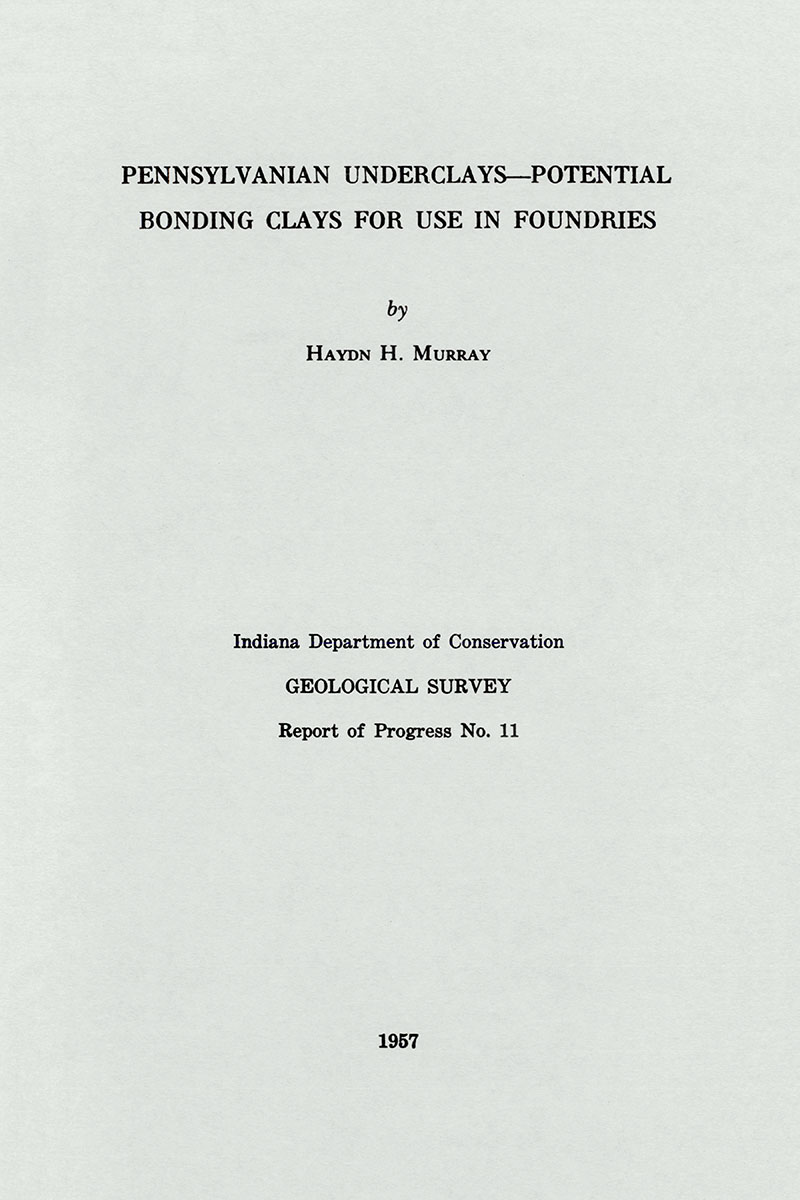CD-ROM. ABSTRACT: Mineralogic and geochemical details of a black shale sequence above the Springfield Coal Member (Pennsylvanian) vary greatly. The sequence is locally interrupted by contemporaneous linear sandstone bodies which have been interpreted to represent freshwater channels. Models suggest that chemical and mineral variations related to the channel should occur if a fresh water river has affected deposition of coal -bearing shale units. Clay mineralogy and geochemistry of Pennsylvanian shales associated with and deposited contemporaneously with these thin, linear distributary channel sand bodies do reveal spatial patterns that appear to have been affected by fresh water. Data from numerous (400+) samples of gray, fresh water overbank shales (A-type), black marine shales (B-type), carbonate rocks (C-type), and gray marine to brackish shales (D-type) that overlie the Springfield Coal Member were collected from 52 cores of fresh mine exposures at distances ranging from 0 to 28 miles from the sand bodies. Clay mineral and geochemical data are related to distances from channels ina general manner but correlations were insufficiently precise to allow prediction of channel locations. Shales collected near sandstone bodies exhibit several mineralogic indications that they were affected by fresh water. Patterns of higher illite, lower chlorite, and no smectite characterize samples from near channels. Even though relative clay mineral percentages vary laterally and vertically they do not do so in a sufficiently systematic manner to provide useful exploration tools at least not for long distance exploration. Variations within lithologic subtypes near channels can be usedful predictors in selected instances. Near channels, clay mineral suites are dominated by illite (55%) with nearly equal amounts of chlorite (15%) and mixed-layer clays (18%) and slightly less (10%) kaolite. In most areas black marine shales contain considerably less illite (<45%) and nearly 25% chlorite. Kaolinite (15%) and mixed-layer clays (15%) plus traces of smectite comprise the remaining clays. Gray, often sideritic, shales (D type) that overlay the black shale and carbonate rocks are rather variable in clay composition possibly reflecting varying proportions of fresh and marine influence. Geochemistry of 30 lithologic subtypes show marked variations. Black shales are relatively rich in metals. Major element data indicated that A-type shales contain the most alumina with D type shales having nearly as much. These two also have the most TiO2 and CaO2. Chemistry of burrowed intervals in black shale are more similar to overlying gray shales than to underlying black shales. A distinctive nonmarine black shale variety occurs very near one channel. Black organic-rich shales (B-type) contain abundant carbon (up to 40%), sulfur, and trace metals. These units contain sufficient material to be considered oil shale with yields of up to 17 « gallons per ton. Contrary to expectations, oil yields are not related to sample location with respect to channels. Analyses of A- and D-type shales show uniformly low trace element values except for strontium that is relatively high in overlying gray shales and in carbonates. Strontium is a good indicator of marine influence. Negative sulfur isotope values and a suite of redox indicators indicate low oxygen conditions for deposition of all subtypes. Detailed geochemical data also show general patterns but these patterns are too diffuse to be viable exploration tools. Negative sulfur isotope values appear to be useful marine indicators as do easily leachable ions. A more robust vertical pattern is seen. This pattern conforms with a slow transgressive model of black shale deposition. Vertical geochemical patterns especially in black shales are consistent with the Heckel deep slow model of black shale formation. Poor mixing of waters during deposition, effects of post depositional processes, variable contributions by organic materials, and post-depositional changes in chemistry of waters in contact with shale all complicate ideal simple models and require further study.
Shaffer, N. R. 1996, Lateral variation in mineralogy and geochemistry of Pennsylvanian black shale sequences related to contemporancous fresh water channels, southwestern Indiana: Indiana Geological Survey Open-File Study 96-18, 402 p., 51 fig., 1 pl.
Notes: Publications in the Indiana Geological Survey Open-File series have been inconsistently named using a variety of series titles including "Open-File Report," "Open-File Map," and "Open-File Study." Prior to 1994, a publication in this series was generally referred to as an "Open-File Report" (but not always). To help reduce confusion created by these inconsistencies, the IGS now refers to every publication in the Open-File series as an "Open-File Study." To be entirely correct in writing a bibliographic reference for a publication, one should use the series name and number that appears on the publication itself.
2 appendices.Publication on CD-ROM
You may also like:
Keywords: shale, mineralogy, geochemistry, Pennsylvanian, Springfield Coal Member, clay, sedimentology
Can't find what you're looking for? Feel free to contact us directly:
Indiana Geological and Water Survey
1001 E. 10th St.
Bloomington, IN 47405
812-855-7636 (phone)
812-855-2862 (fax)
IGWSinfo@indiana.edu
IGS Return Policy
- Original sales receipt required.
- Returns accepted within 30 days of purchase date.
- Refund will be issued by the same method of payment as purchased.
- Products must be returned in the same new condition as purchased.
- Refunds on custom orders and digital products are NOT allowed.
- Customers are responsible for paying shipping costs to return products.
Updated 8/19/2020



